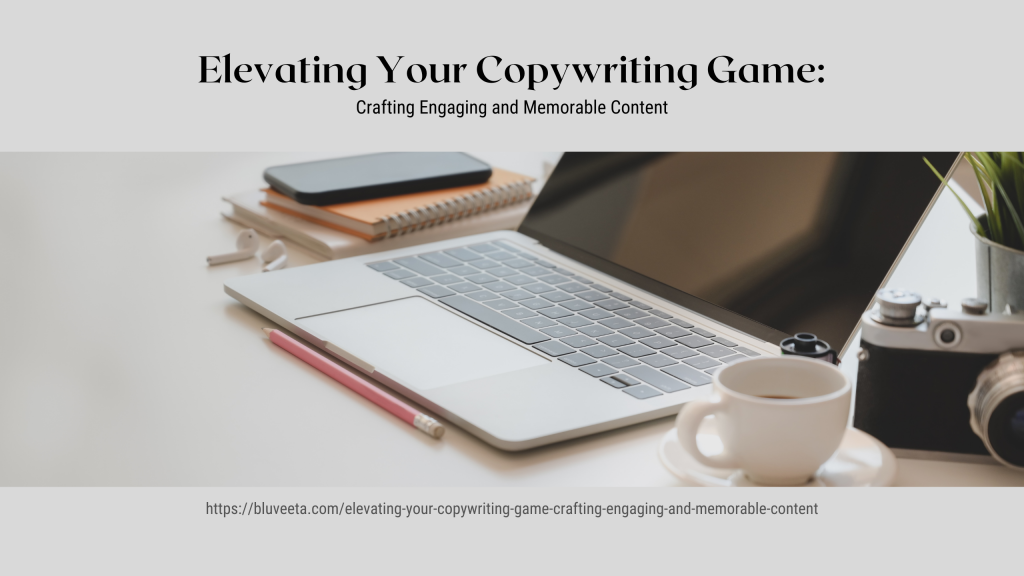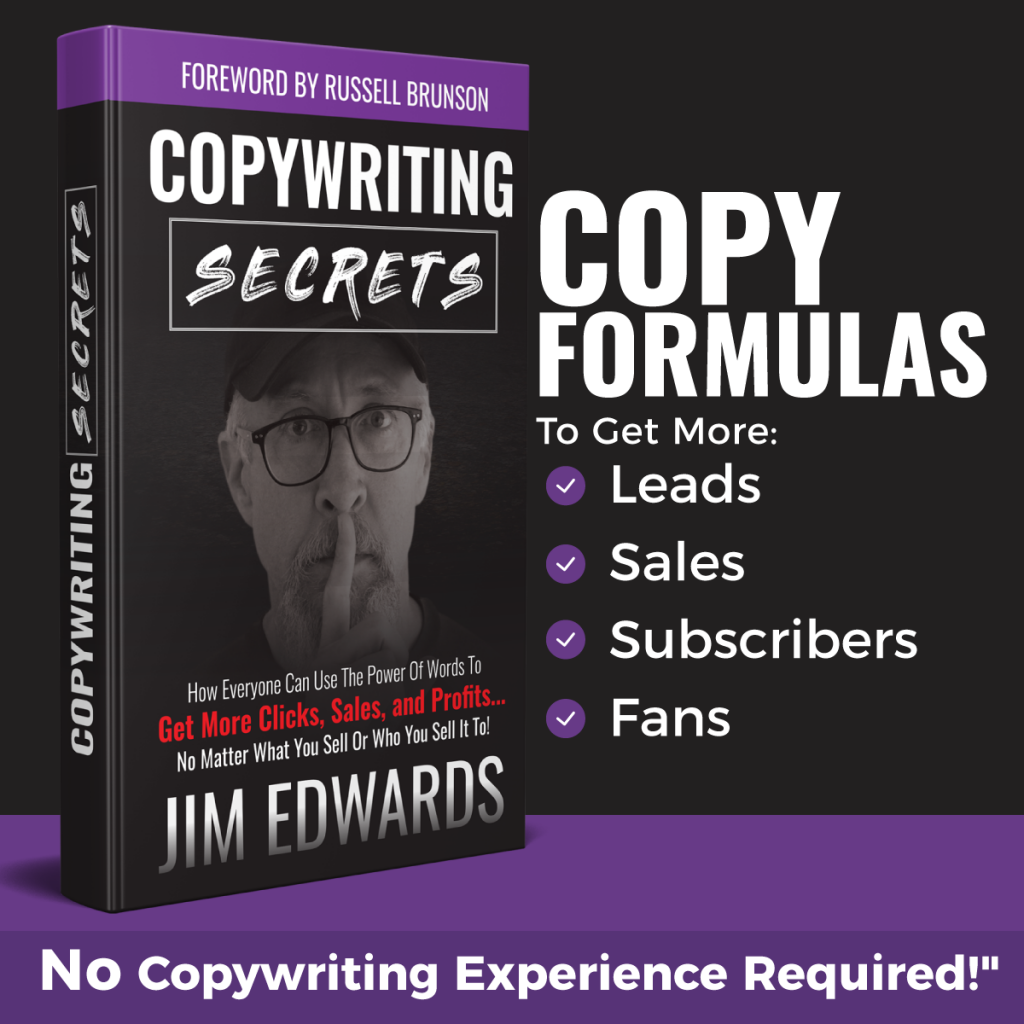
In the realm of copywriting, the ability to captivate and engage readers is crucial for success. While effective communication is essential, there are techniques you can employ to make your copy more memorable and relatable. In this blog post, we will explore the art of crafting engaging and impactful copywriting. By implementing these strategies, you can elevate your content and create a lasting impression on your audience.
The Power of Connection:
To create compelling copy, it’s essential to establish a deep and authentic connection with your audience. Start by conducting thorough market research to gain insights into your target demographic. This includes analyzing data, engaging in conversations with your customers, and monitoring feedback from social media platforms, customer surveys, and online communities.
By understanding their needs, desires, and pain points, you can craft copy that directly addresses their concerns and aspirations. Put yourself in their shoes and empathize with their experiences. What challenges are they facing? What solutions are they seeking? By showing that you truly understand their perspective, you build trust and credibility.
When creating content, consider the emotional journey your audience goes through. Connect with their emotions by tapping into their desires, fears, and hopes. Craft copy that speaks to their aspirations and dreams, while also acknowledging their struggles. By acknowledging their emotions and validating their experiences, you establish a sense of empathy and make your copy more relatable.
Furthermore, leverage the power of storytelling to forge a connection with your audience. Share narratives that reflect their experiences or showcase real-life success stories of individuals who have benefited from your product or service. Storytelling helps create an emotional bond, enabling your audience to see themselves in the story and envision the positive outcomes they can achieve.
In addition, make an effort to engage with your audience on various platforms and channels. Respond to comments and messages, participate in relevant discussions, and show genuine interest in their feedback. By actively listening and engaging, you demonstrate that you value their opinions and are committed to meeting their needs. This interaction fosters a sense of community and loyalty, further strengthening the connection between your brand and your audience.
Remember, building a strong connection with your audience requires ongoing effort and a genuine desire to understand and meet their needs. By continually listening, learning, and adapting your copywriting approach, you can create content that resonates deeply and establishes a lasting bond with your audience.
Know Your Audience:
Crafting copy that resonates with your target audience requires a comprehensive understanding of their demographics, preferences, and behavior. Here are some steps to help you gain valuable insights into your audience:
Conduct Market Research: Start by conducting thorough market research to gather data on your target demographic. Identify key demographic information such as age, gender, location, and income level. Use analytics tools, surveys, and social media listening to gather quantitative and qualitative data about your audience’s preferences, interests, and pain points.
Develop Buyer Personas: Once you have collected relevant data, develop detailed buyer personas that represent different segments of your audience. A buyer persona is a fictional profile that embodies the characteristics, behaviors, and motivations of your ideal customer. Consider factors such as their goals, challenges, values, and decision-making processes. This exercise helps you create more targeted and personalized copy that resonates with specific segments of your audience.
Analyze Competitor Insights: Study your competitors’ copywriting strategies to gain insights into their messaging, positioning, and target audience. Analyze their content, social media presence, and customer interactions to identify gaps or opportunities you can leverage. Understanding how your competitors engage with their audience can provide valuable insights into what resonates with your shared target market.
Engage in Audience Surveys and Interviews: Reach out to your existing customer base and conduct surveys or interviews to gather direct feedback. Ask questions about their preferences, pain points, and what they find most compelling in copywriting. This firsthand feedback allows you to refine your messaging and align it with your audience’s expectations.
Monitor Social Media Interactions: Social media platforms provide a wealth of real-time data and conversations that can inform your copywriting strategy. Monitor relevant hashtags, join industry-related groups, and pay attention to comments, discussions, and reviews. This will give you a pulse on your audience’s sentiments, emerging trends, and frequently asked questions, which you can leverage in your copy.
Test and Iterate: Once you have implemented your copy, track its performance through analytics tools. Monitor engagement metrics, conversion rates, and feedback from your audience. Use A/B testing to compare different copy variations and identify which resonates best with your target audience. Continuously iterate and refine your copy based on data-driven insights to optimize your messaging for maximum impact.
By continuously investing in audience research and analysis, you can gain a deeper understanding of your target audience’s preferences, motivations, and pain points. Armed with this knowledge, you can tailor your copywriting to speak directly to their needs, desires, and aspirations, ultimately creating content that resonates and drives meaningful engagement.
Clarity and Simplicity:
In the digital age where information overload is prevalent, capturing and maintaining your audience’s attention requires clarity and simplicity in your copy. Here are some key considerations to ensure your messaging is clear and easily understood:
Understand Your Key Message: Before you start writing, clarify the main message you want to convey. What is the core value proposition of your product or service? What problem does it solve for your audience? Having a clear understanding of your key message will guide your copywriting and help you stay focused.
Use Plain Language: Avoid jargon, technical terms, or industry-specific language that may confuse your audience. Instead, strive for simplicity and use language that the average reader can easily comprehend. If you need to include technical terms, provide clear explanations or definitions to ensure understanding.
Organize Your Thoughts: Structure your copy in a logical and organized manner. Use headings, subheadings, and bullet points to break up the text and make it easier to skim. This allows readers to quickly grasp the main points and navigate the content with ease. Consider the use of clear transitions between paragraphs to create a smooth flow and aid comprehension.
Be Concise: Respect your audience’s time by being concise and avoiding unnecessary fluff. Trim down your sentences and paragraphs to convey your message succinctly. Use active voice and strong verbs to make your writing more impactful. Eliminate redundant or repetitive phrases and focus on delivering your message efficiently.
Highlight Benefits: Clearly communicate the benefits your product or service offers. Explain how it solves your audience’s problems or fulfills their desires. Use specific examples and tangible results to illustrate the value they can expect. By emphasizing benefits, you make your copy more persuasive and relatable.
Test Readability: Use tools like the Flesch-Kincaid readability test to assess the readability of your copy. Aim for a reading level that matches your target audience’s comprehension abilities. The test will provide a score that indicates the average number of years of education required to understand the text. Adjust your copy accordingly to ensure it aligns with your audience’s reading proficiency.
Proofread and Edit: Always proofread your copy to eliminate spelling errors, grammar mistakes, and inconsistencies. Ensure that your sentences are clear and free of ambiguity. Consider having someone else review your copy to provide an objective perspective and catch any overlooked errors.
Remember, clarity and simplicity are crucial for effective communication. By using plain language, organizing your thoughts, being concise, highlighting benefits, and ensuring readability, you provide your audience with a clear and engaging copy that is easy to understand and digest.
Tell a Compelling Story:
Humans have an innate affinity for stories, making storytelling a powerful tool in copywriting. By incorporating storytelling elements into your copy, you can create an emotional connection with your audience and make your message more memorable. Here’s how to weave compelling stories into your copy:
Identify the Core Story: Determine the central narrative that aligns with your brand, product, or service. It could be the story of how your business started, a customer success story, or a relatable anecdote. Choose a story that resonates with your audience’s experiences, aspirations, or challenges.
Establish a Hook: Begin your story with a compelling hook that captures attention and entices readers to continue reading. This could be an intriguing question, a vivid description, or a relatable scenario. The hook should spark curiosity and create an emotional connection from the outset.
Create Emotional Appeal: Engage your audience’s emotions by incorporating elements like empathy, humor, or inspiration. Appeal to their desires, fears, or dreams. Craft a narrative that evokes emotions and helps your audience connect with the characters or situations in the story.
Use Descriptive Language: Paint a vivid picture with descriptive language. Help readers visualize the setting, characters, and emotions involved in the story. Use sensory details to make the story come alive and immerse your audience in the narrative.
Incorporate Conflict and Resolution: Every compelling story involves conflict and resolution. Introduce a challenge or problem that your audience can relate to. Show how your product or service offers a solution or brings about a positive transformation. Highlight the benefits and outcomes that result from resolving the conflict.
Include Social Proof: Enhance the credibility of your story by including social proof, such as testimonials or real-life examples. Share how others have benefited from your offering and the impact it has had on their lives. Social proof adds credibility and reinforces the authenticity of your story.
Keep it Concise and Relevant: While storytelling is powerful, it’s important to strike a balance. Keep your story concise and focused, ensuring it directly relates to your product or service. Avoid tangents or excessive details that distract from the main message. Your story should enhance the understanding and desirability of your offering.
Tie it to a Call-to-Action: Conclude your story by seamlessly transitioning to a clear and compelling call-to-action (CTA). Link the resolution of the story to the desired action you want your audience to take. This can be signing up for a newsletter, making a purchase, or engaging further with your brand.
Remember, storytelling humanizes your brand and makes your copy more relatable and memorable. By incorporating captivating hooks, emotional appeal, descriptive language, conflict and resolution, social proof, and concise relevance, you can weave stories that resonate deeply with your audience and inspire them to take action.
Call-to-Action:
A compelling call-to-action (CTA) is a crucial element of effective copywriting. It guides your audience towards the desired action and helps convert readers into customers. Here are some key strategies to create persuasive and impactful CTAs:
Be Clear and Direct: Make sure your CTA is concise, straightforward, and easy to understand. Clearly state the action you want your audience to take, using action-oriented language. Avoid ambiguity or vague instructions that may confuse or deter readers.
Use Strong and Persuasive Verbs: Use powerful verbs to create a sense of urgency and motivation. Words like “buy,” “join,” “discover,” “explore,” or “get started” convey a clear sense of action. Pair these verbs with specific benefits or incentives to increase their impact.
Create a Sense of Urgency: Encourage immediate action by incorporating time-limited offers, limited availability, or exclusive deals. Phrases like “limited time offer,” “only available today,” or “act now” instill a sense of urgency and motivate readers to take action promptly.
Highlight the Benefits: Clearly communicate the value and benefits that your audience will receive by taking the desired action. Explain how your product or service will solve their problems, fulfill their desires, or improve their lives. By highlighting the benefits, you provide a compelling reason for readers to engage with your CTA.
Use Design Elements: Make your CTA visually appealing and distinguishable from the rest of the content. Use contrasting colors, bold or italicized fonts, or buttons to draw attention to the CTA. Ensure that it stands out on the page and is easily clickable or accessible.
Provide Reassurance and Guarantee: Address any potential concerns or objections that your audience may have. Assure them that their information is safe, offer money-back guarantees, or highlight testimonials and reviews that demonstrate the trustworthiness and quality of your product or service. This reassurance builds confidence and increases the likelihood of conversion.
Test and Optimize: A/B test different variations of your CTAs to identify the most effective approach. Experiment with different wording, colors, placements, or designs to determine which combination generates the highest conversion rates. Continuously monitor and optimize your CTAs based on performance data and user feedback.
Place CTAs Strategically: Position your CTAs strategically within your copy. Place them in prominent locations, such as near compelling content or at the end of persuasive sections. Utilize multiple CTAs throughout your copy, particularly on longer pages, to provide multiple opportunities for engagement.
Align with the Buyer’s Journey: Tailor your CTAs to align with the stage of the buyer’s journey your audience is in. Offer informative resources or educational content for those in the awareness stage, while providing product demonstrations or free trials for those in the consideration or decision stage. This ensures your CTAs are relevant and timely.
Remember, an effective CTA is the catalyst that turns readers into customers. By being clear, persuasive, urgent, and benefits-driven, and by utilizing design elements, providing reassurance, and strategically placing your CTAs, you can significantly increase conversions and drive desired actions from your audience. Continually refine and optimize your CTAs based on data and user feedback to maximize their effectiveness.
Conclusion:
Crafting engaging and memorable copy requires a thoughtful approach. By establishing a connection with your audience, knowing them intimately, communicating with clarity and simplicity, incorporating compelling storytelling, and including persuasive CTAs, you can elevate your copywriting game. Consistently implement these strategies, refine your approach based on feedback and analytics, and watch as your content resonates with your audience, drives desired outcomes, and establishes a meaningful connection between your brand and your readers.
Recommended Book to Improve Your Copywriting Skills
Take your copywriting skills to the next level with the powerful insights and strategies found in “Copywriting Secrets.” This book is a game-changer for anyone looking to create compelling and persuasive copy that drives results.
Are you ready to captivate your audience, boost conversions, and unlock the true potential of your business through persuasive writing? Don’t miss out on the opportunity to transform your copywriting prowess.
>> Click here to grab your copy of “Copywriting Secrets” today <<
Uncover the secrets to crafting irresistible headlines, captivating storytelling, and compelling calls-to-action. Learn how to connect deeply with your audience, understand their needs, and deliver persuasive messages that resonate.
Whether you’re a seasoned marketer, an aspiring copywriter, or a business owner looking to enhance your marketing efforts, “Copywriting Secrets” is your ultimate guide to mastering the art of persuasive writing.

Don’t delay! Start creating copy that drives conversions and grows your business.
Order your copy of “Copywriting Secrets” now and discover the power of persuasive communication.
Click here to order your copy now
Remember, every word counts when it comes to effective copywriting. Invest in yourself and your business by getting your hands on “Copywriting Secrets” today. Your success starts with compelling copy.
DISCLAIMER: This contains affiliate links, which means that if you click on one of the product links, we may receive a commission at no additional cost to you. This helps support our website and allows us to continue to make online marketing content for you.
Disclosure: I am an independent ClickFunnels Affiliate, not an employee. I receive referral payments from ClickFunnels. The opinions expressed here are my own and are not official statements of ClickFunnels or its parent company, Etison LLC.




